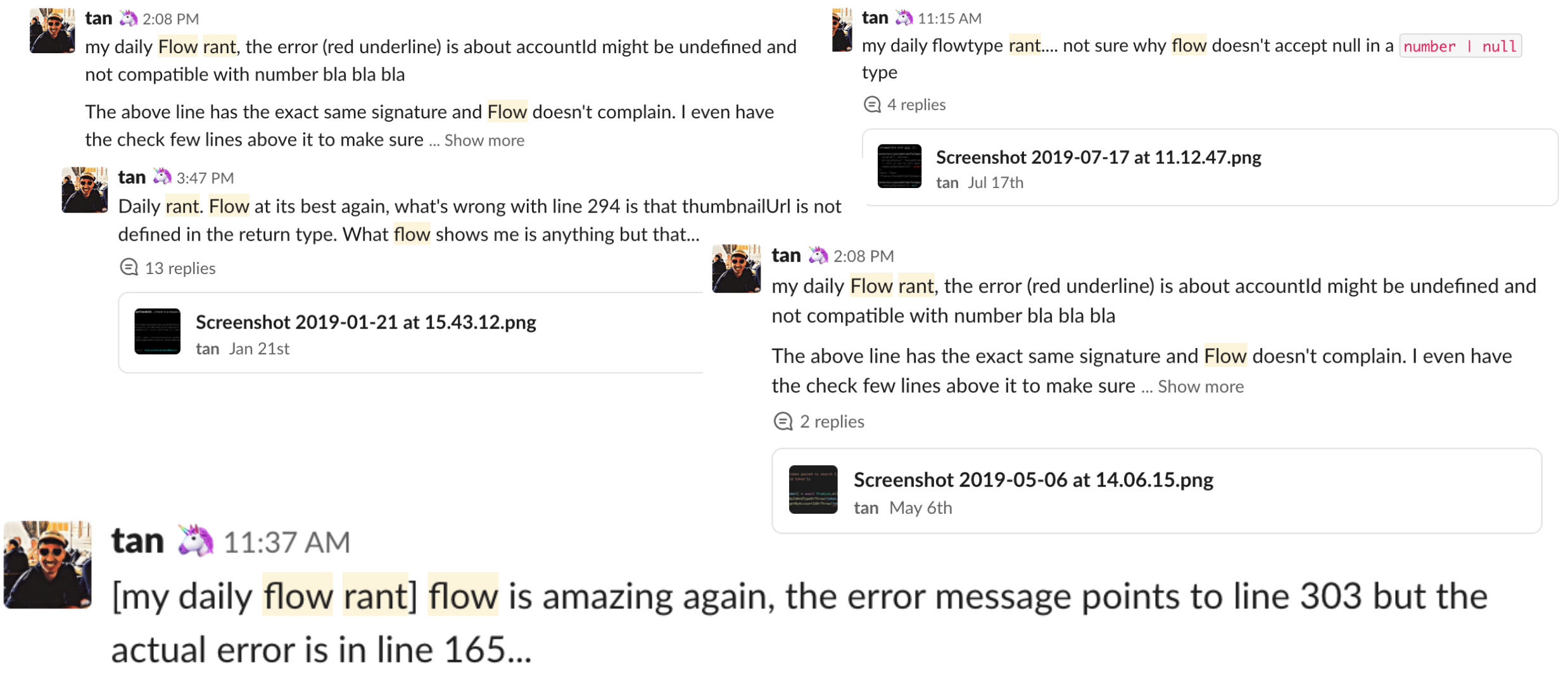A gentle introduction to Flow(type)
Last week, I was lucky to be able to give a talk at HelsinkiJS. The presentation was rather long compared to other because it introduces the type system as well as Flow. In this blog post I’m gonna summarize my presentation.
But first thing first, here is the slide. I will skip all the basic stuff and jump straight to what I think is interesting or what I have learned while preparing the slides.
What is a type?⌗
Let’s actually start with what is a type rather than “why we need a static type checker in JS”. A type consists of 2 parts, the name and the structure. For example, if we define a type called Person, its structure can have age which is a number and name which is a string. So the type checker uses either the name or the structure to distinguish between types.
Comparing types using their name is called nominal typing, and using their structure is called structural typing. Flow employs both approaches. It uses nominal typing for comparing classes (treated as both value and type) and structural typing for comparing objects or functions
For example
type Human = {
name: string,
age: number
};
type Dwarf = {
name: string,
age: number
}
const person: Human = {
name: 'Tan',
age: 90
};
const dwarf: Dwarf = person;
any vs mixed⌗
At first glance, any and mixed can be very confusing, but they have a subtle difference that can catch you off guard

mixedis the supertype of all typesanyis the supertype and subtype of all types
To illustrate this difference I have this piece of code
const mixedString: mixed = 'string';
const anyString: any = 'string';
let realString: string;
realString = anyString;
// yield error
// Cannot assign `mixedString` to `realString` because mixed is incompatible with string
realString = mixedString;
Interfaces are implicit⌗
And last but not least, interfaces in flow can be used implicitly. Although in my opinion this might create some confusion in the code base.
interface Runnable {
run(): void
}
interface Barkable {
bark(): void
}
class Dog {
run() {}
bark() {}
}
const golden: Runnable = new Dog();
const lab: Barkable = new Dog();
const shiba: Runnable & Barkable = new Dog();
Final words…⌗
Even though I have been working with flow for more than 2 years, there are still a lot of things to learn about flow. Unfortunately, the more I work with flow, the more I hate its error reporting system. It makes absolutely no sense 80% of the time. I even have regular flow rant on our company’s slack channel

That’s not even all of it… I wish flow had a better error trace to point me to the correct line where the error happens.